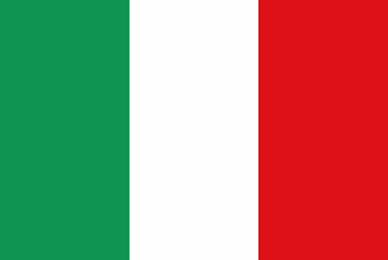





È una tra le fonti più grandi e belle di Siena. La sua prima notizia risale al 1226. Attorno al 1270 fu fortificata insieme a Fontebranda e alla Fonte di Pescaia. Progressivamente abbandonata nel corso del Trecento venne affidata ai frati di Santo Spirito nel 1509, per intercessione di Pandolfo Petrucci, signore di Siena, e sottratta alla pubblica utilità. Rimasta per molto tempo interrata è stata oggetto di un recente recupero che l'ha riportata alla luce. Il suo nome deriva dal latino fullones, cioè i tintori e gualchieri (lanaioli). La sua struttura è costituita da un fronte con tre grandiosi archi romanici incorniciati da altrettanti archi gotici. Contrariamente alla maggior parte delle fonti senesi è alimentata da un bottino autonomo che per stillicidio raccoglie le acque direttamente dalla valle in cui si trova. La fonte fino al tardo Quattrocento era collocata esternamente alle mura della città e fu ricompresa al loro interno solo con il più recente ampliamento della cinta muraria.
Fonte di Follonica is one of the largest and most beautiful fountains of Siena. It’s first mention dates back to 1226. Around 1270 it was fortified together with Fontebranda and the Fonte di Pescaia. Progressively abandoned over the years, in the fourteenth century the management was entrusted to the friars of the Holy Spirit 1509, then under the dominion of Pandolfo Petrucci, who removed it from public use. Buried for a long time, the fountain has only recently been recovered and restored. It’s name derives from the latin fullones, which means dyers and those who work with wool. Its structure is made up of a facade of three imposing Romanesque arches framed by three Gothic arches. As opposed to most Sienese fountains, the water comes from an independent reservoir which gathers the water directly from the valley where it is located. Until the fifteenth century the fountain was located outside the walls but is now inside following the most recent extension of the city walls.
Der Brunnen Fonte di Follonica ist einer der grössten und schönsten Sienas. Seine erste Urkunde stammt aus dem Jahr 1226. Um 1270 wurde er so wie der Brunnen Fontebranda und Fonte di Pescaia erweitert. Nach und nach im Laufe des 14.Jahrhunderts wurde er verlassen bis er im Jahre 1509 den Mönchen von Santo Spirito anvertraut wurde, und Pandolfo Petrucci, ein Adliger Sienas, veranlasste, dass er nicht mehr öffentlich zugänglich war. Lange Zeit war er verschüttet und nur jüngste Restaurierungsarbeiten brachten ihn wieder zum Vorschein. Sein Name stammt von dem lateinischen Begriff fullones, was soviel wie Färberer und Walkmühle bedeutet. Der Bau besteht aus einem Vorbau mit drei grossartigen romanischen Bögen, die von gleichvielen gotischen Bögen eingerahmt werden. Im Gegensatz zu den meisten Brunnen Sienas wird er von einer eigenständigen Wasserleitung “bottino” versorgt. Der Brunnen lag bis zum späten 15.Jahrhundert ausserhalb der Stadtmauern und wurde erst mit der letzten Stadtmauererweiterung miteingegliedert.
C’est une des fontaines les plus grandes et les plus belles de Sienne. Les premières nouvelles remontent à 1226. En 1270 elle fut fortifiée ainsi que Fontebranda et Fonte di Pescaia. Progressivement abandonnée au cours du XIVe siècle elle fut confiée aux frères de Santo Spirito en 1509, puis sous la domination de Pandolfo Petrucci, seigneur de Sienne, elle fut retirée de sa fonction publique. Enterrée pour quelques temps elle fut l’objet d’une récente récupération. Son nom dérive du latin fullones, à savoir les teinturiers et les travailleurs de laine. Sa structure est constituée par une façade avec trois grands arcs romans encadrés par des arcs gothiques. Contrairement à la majeure partie des fontaines siennoises elle est alimentée par un conduit autonome qui recueille les eaux dans un réservoir directement par la vallée dans laquelle il se trouve. Jusqu’au XVe siècle la fontaine se trouvait à l’extérieur des remparts de la ville mais grâce au récent agrandissement des remparts elle est désormais englobée à l’intérieur de l’enceinte.
Es una de las fuentes más grandes y bellas de Siena. Su primera noticia remonta al 1226. Alrededor del 1270 fue fortificada junto a Fontebranda y a la Fuente de Pescaia. Progresivamente abandonada en el siglo XIV fue entregada a los frailes del Santo Spirito en el 1509, por intercesión de Pandolfo Petrucci, señor de Siena, y retirada del servicio público. Durante mucho tiempo se mantuvo enterrada, y desde hace poco fue recuperada regresándola a la luz. Su nombre deriva del latín fullones, es decir tintoreros y gualchieri (trabajaban la lana). Su estructura está constituida por un frente con tres arcos románicos enmarcados por otros arcos góticos. Al contrario de la mayor parte de las fuentes sienesas está alimentada por un bottino autónomo que por un goteo recoge las aguas directamente por el valle en el que se encuentra. La fuente hasta finales del siglo XV estaba colocada externamente a las murallas de la ciudad y fue incluida dentro de ellas solo con el más reciente ampliamente de las murallas.

Luoghi
A few hours or even just one day is definitely not enough to discover Siena and experience it in all its aspects.
Thanks to a priceless historical and artistic heritage and to a rich net of commercial activities, Siena offers many cultural, entertainment and travel opportunities. Breathtaking views and hidden corners, confirmations and surprises await you behind every alley and in every square with unusual perspectives to be discovered also through the itineraries that we show you in this page.
The routes that vary according to the number of days, to your passions, to the season and to the will to either walk or rather relax in the city's green spaces. Many different ways to achieve a single objective: making your travel experience in our city unforgettable.
So, enjoy Siena! And thank you for spending your free time in our city.
We’ll always remain here, waiting for your next visit.



